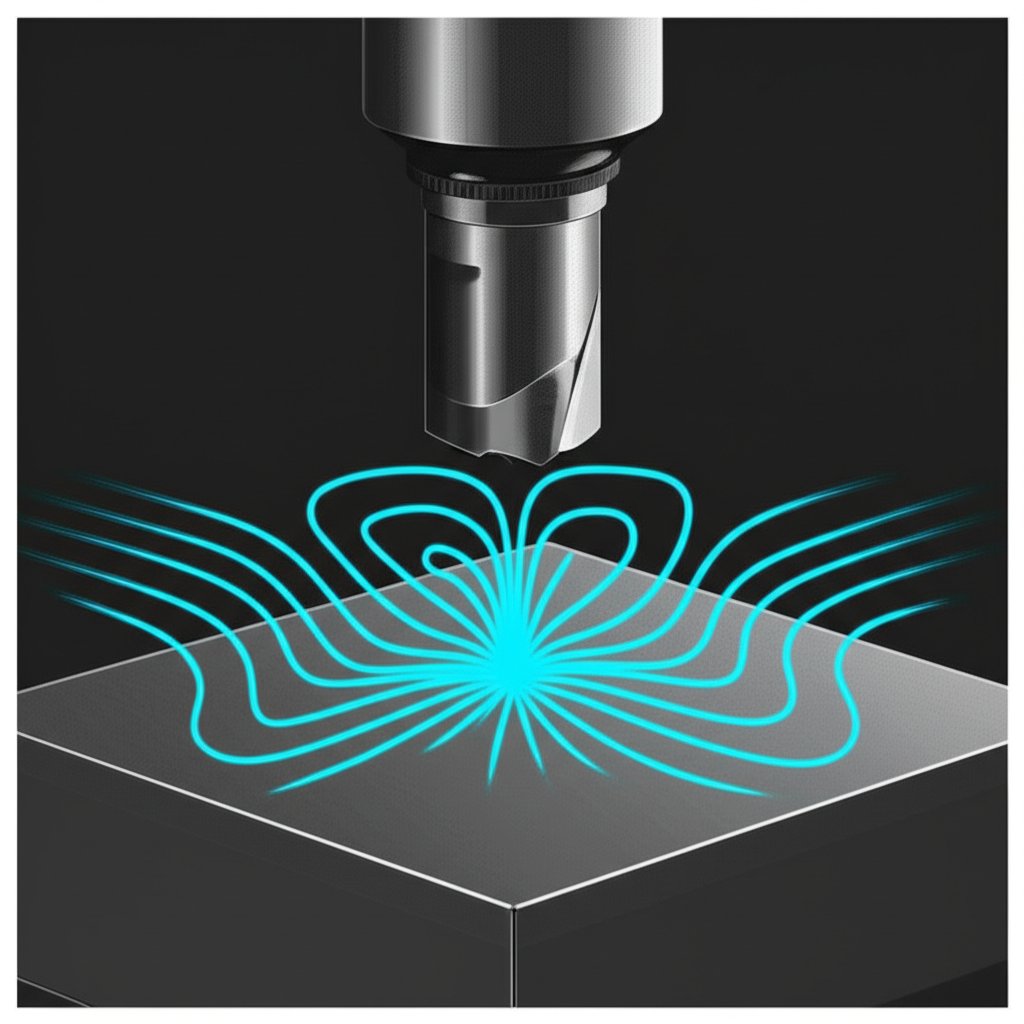Precision CNC Machining for Plastics: Core Strategies

TL;DR
Successfully CNC machining plastics hinges on two core principles: selecting the right material for your application's specific needs and meticulously managing heat. Plastics have a much higher rate of thermal expansion and lower heat dissipation than metals, making precise control of cutting speeds, feed rates, and tooling essential to prevent melting, warping, and dimensional inaccuracies. Materials like Delrin (POM) and ABS are popular starting points, but the optimal choice depends on factors like required durability, friction properties, and chemical resistance.
Comprehensive Guide to Plastic Material Selection for CNC Machining
Choosing the correct plastic is the most critical decision in the CNC machining process. Unlike metals, plastics exhibit a vast range of properties that directly influence their machinability and performance in the final application. The selection process involves balancing mechanical characteristics, chemical resistance, thermal stability, and cost. For instance, a part requiring low friction and high dimensional stability, like a gear or bearing, would be an excellent candidate for Delrin (POM), whereas a general-purpose prototype might be better suited for the cost-effective and impact-resistant ABS.
Key factors to consider include the material's hardness, stiffness, and thermal expansion rate. Harder, more rigid plastics generally machine cleaner with tighter tolerances, but can be brittle. Softer plastics may resist impact but can be challenging to machine without creating burrs or deforming under tool pressure. Furthermore, some plastics, like Nylon, absorb moisture, which can affect their dimensional stability over time if not properly conditioned. For projects in the early stages, especially rapid prototyping, getting expert feedback on these material choices is invaluable. For example, formative manufacturing services can accelerate development by offering a wide array of material options and providing crucial Design for Manufacturability (DFM) feedback. For those looking to explore such options, XTJ provides comprehensive solutions that help bridge the gap from concept to functional testing.
To simplify the selection process, the following table synthesizes the properties, applications, and machining considerations for several common CNC-machinable plastics.
| Plastic Name | Key Properties | Common Applications | Machinability Notes |
|---|---|---|---|
| ABS (Acrylonitrile Butadiene Styrene) | High impact strength, toughness, low cost, easily finished. | Housings, enclosures, pre-injection molding prototypes, consumer goods. | Machines easily to a matte finish but has poor chemical and abrasion resistance. |
| Delrin® (POM/Acetal) | High stiffness, excellent dimensional stability, low friction, self-lubricating. | Gears, bearings, bushings, precision mechanical parts, fixtures. | Excellent for tight tolerances but can be prone to warping if internal stresses are not managed. Difficult to glue. |
| Nylon (PA) | High wear resistance, good strength and durability, chemical resistance. | Moving parts, gears, bushings, electrical insulators, medical devices. | Can absorb moisture, which affects dimensional accuracy. Prone to warping with asymmetric material removal. |
| Acrylic (PMMA) | Optical transparency, lightweight, scratch-resistant. | Light pipes, display cases, lenses, lightweight glass substitutes. | Brittle and can crack or shatter. Machined surfaces become frosted but can be polished for clarity. |
| Polycarbonate (PC) | Extremely high impact resistance, good stiffness, functional over a wide temperature range. | Safety shields, machine guards, bulletproof glass, durable prototypes. | Very durable but has poor scratch resistance without a coating. Requires careful tool selection to avoid stress cracking. |
| PTFE (Teflon®) | Extremely low friction, excellent chemical resistance, high temperature resistance. | Seals, gaskets, parts for corrosive environments, non-stick surfaces. | Very soft and can be difficult to hold tight tolerances. Prone to deflection under tool pressure. |
Fundamental Techniques and Machine Setup for Plastics
Machining plastics effectively is fundamentally a game of heat management. Plastics conduct heat far more slowly than metals, and their thermal expansion can be up to 20 times greater. This means that heat generated at the cutting edge doesn't dissipate quickly, leading to localized melting, tool gumming, and material deformation if not properly controlled. The primary goal of any plastic machining setup is to create a clean chip and evacuate it from the cutting zone as quickly as possible, taking the heat with it.
Tool selection is paramount. While High-Speed Steel (HSS) tools can work for unreinforced thermoplastics, carbide-tipped tools are necessary for glass-reinforced or more abrasive plastics. Tools should be exceptionally sharp with positive rake angles and generous relief angles to shear the material cleanly rather than plowing through it. For materials like acrylic, specialized 'O-flute' end mills are often used to produce a polished edge and efficiently clear chips. According to Mitsubishi Chemical Group, threading should be performed with a carbide insert, taking several shallow passes (e.g., four to five 0.001” passes) at the end to achieve a clean thread without tearing the material.
Cooling strategies also differ from metalworking. While flood coolants can be used, compressed air is often the preferred method as it effectively clears chips and provides sufficient cooling without causing thermal shock or chemical reactions with sensitive plastics like polycarbonate. When drilling, especially deep holes, a technique known as “peck drilling” is essential. This involves drilling to a depth of no more than 3-4 times the drill's diameter before retracting to clear chips and allow the area to cool.
Pre-Machining Checklist
- Verify Material Conditioning: For hygroscopic plastics like Nylon, ensure the material has been conditioned to its equilibrium moisture content to prevent post-machining dimensional changes.
- Select Appropriate Tooling: Use sharp, dedicated plastic-cutting tools (preferably carbide for reinforced grades) with positive rake and high clearance angles. Ensure tools are free of nicks or wear.
- Secure the Workpiece: Clamp the stock securely but without excessive force to avoid deforming or introducing stress into the material. Use wide-jawed vises or custom fixtures.
- Establish a Cooling Strategy: Determine if dry machining, compressed air, or a mist/flood coolant is appropriate. Avoid petroleum-based coolants on amorphous plastics like PC to prevent crazing.
- Calculate Speeds and Feeds: Start with recommended parameters for the specific plastic. Generally, use higher spindle speeds and feed rates than for metals to avoid dwelling and melting, but adjust based on chip formation. A clean, continuous chip is the goal.

Troubleshooting Common Issues in Plastic Machining
Even with careful planning, the unique properties of plastics can lead to common machining challenges. The root cause of most issues—from poor surface finish to dimensional inaccuracy—is improper heat management or mechanical stress. Understanding these problems and their solutions is key to producing high-quality plastic parts. The most prevalent issue is thermal expansion, which can cause a part to be machined to the correct size while warm but shrink out of tolerance as it cools. This requires machining in a temperature-controlled environment and sometimes leaving extra material for a final, light finishing pass after the part has stabilized.
Another frequent problem is material melting at the cutting edge. This is a clear sign that the tool is rubbing rather than cutting, generating excessive frictional heat. This can be caused by a dull tool, a feed rate that is too slow, or a spindle speed that is too high. The solution is to ensure tools are sharp, increase the feed rate to produce a thicker chip that carries heat away, or reduce the spindle speed. According to Curbell Plastics, signs of improper drilling techniques include cracks, crazing, and undersized holes, all of which point to excessive heat buildup and stress.
The following table outlines common problems, their likely causes, and actionable solutions to implement on the shop floor.
| Common Problem | Primary Cause(s) | Recommended Solution(s) |
|---|---|---|
| Material Melting / Gumming | Dull tool; feed rate too slow; spindle speed too high; poor chip evacuation. | Use a sharp tool with a polished flute; increase feed rate; reduce spindle speed; use compressed air or coolant to clear chips. |
| Chipping or Cracking | Material is brittle (e.g., Acrylic); tool geometry is too aggressive; feed rate is too high; workpiece is not supported. | Use a tool with a neutral or slight positive rake; reduce feed rate on entry/exit; provide a backing material when drilling through-holes. |
| Poor Surface Finish | Tool rubbing instead of cutting; vibration or chatter; built-up edge on the tool. | Use a sharp tool with a high helix angle for a better shearing action; ensure the workpiece and tool are rigidly clamped; use coolant to prevent material from sticking to the tool. |
| Poor Dimensional Accuracy | Thermal expansion; tool deflection; internal material stresses being released; workpiece deformation from clamping. | Machine in a climate-controlled area; use sharp tools and light finishing passes; use stress-relieved (annealed) material; apply minimal clamping pressure. |
Key Takeaways for Precision Plastic Machining
Mastering the art of CNC machining plastics is a valuable skill that unlocks lightweight, corrosion-resistant, and cost-effective alternatives to metal components. The journey to a perfect plastic part rests on a foundation of informed material selection, strategic heat management, and precise technique. Always begin by matching the plastic's inherent properties—be it the low friction of Delrin, the impact resistance of ABS, or the clarity of Acrylic—to the demands of your final application.
Remember that heat is the primary adversary. Every choice, from tool geometry and coatings to speeds, feeds, and coolants, should be made with the goal of creating a clean chip that carries heat away from the workpiece efficiently. By implementing these core strategies and troubleshooting common issues like melting and thermal expansion, you can consistently produce accurate, high-quality machined plastic components.

Frequently Asked Questions
1. What plastic is best for CNC machining?
The "best" plastic depends entirely on the application. For durable, low-friction parts like gears, Delrin (Acetal/POM) is an excellent choice. For general-purpose prototypes and housings, ABS is often preferred due to its low cost and high impact strength. For applications requiring optical clarity, Acrylic (PMMA) or Polycarbonate (PC) are top contenders.
2. Can all plastics be CNC machined?
Most thermoplastics can be CNC machined, but their machinability varies greatly. Hard, rigid plastics like PEEK or Delrin machine very well and can hold tight tolerances. Softer plastics like HDPE or LDPE can be more challenging, as they may deform under tool pressure or create significant burrs. The key is to adapt the cutting strategy, tooling, and workholding to the specific properties of the material.
3. How do you prevent plastic from melting during machining?
To prevent melting, you must minimize frictional heat. This is achieved by using extremely sharp tools designed for plastics (e.g., with high positive rake angles), increasing the feed rate to ensure the tool is cutting rather than rubbing, and using a coolant like compressed air to clear chips and cool the cutting zone. Reducing the spindle speed (RPM) can also help if excessive heat is being generated.





